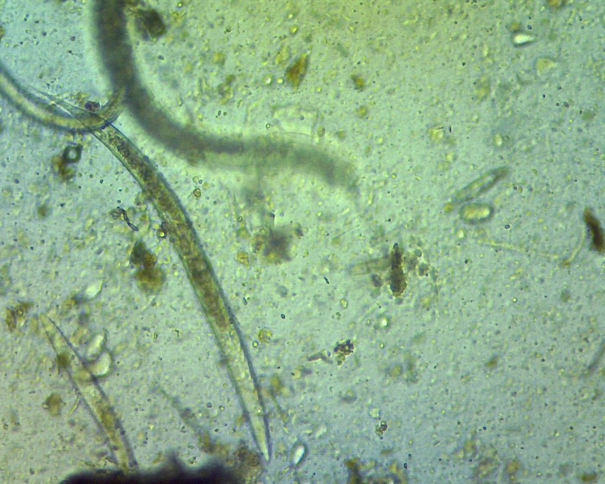
Thyme
Thymus vulgaris
Mint Family (Lamiaceae)

As with many widely used culinary herbs, thyme is another aromatic mint family plant with medicinal properties. Traditionally it has been used to address coughs, sore throats, support digestion or treat stagnant digestion, and various infections - infections in the mouth, vaginal yeast infections and other fungal infections, and relieve pain (De la Foret, 2017). Romans used to have thyme preparations before eating, or along with eating, to prevent food-borne ailments, and Romans and Greens burned thyme bundles to purify the environment in sacred spaces (Patil, 2021). Thyme was also applied to skin during the plague in the 1340s, and in the 19th century, nurses used thyme infusion soaked bandages as an antiseptic (Patil, 2021).
Antioxidant action
Oxidative stress is a factor in many chronic and degenerative diseases, so antioxidant action is an important contribution to health.
Thyme has been found to contain high levels of antioxidants, which can counter oxidative stress (Singletary, 2016). This is true both of the dried herb - where levels were nearly 3 times more than in ginger or garlic - and the essential oil. Taken together, a number of animal studies revealed that orally administered thyme oil and its constituents thymol and carvacrol improved antioxidant biomarkers in several tissues. The same effects were also found with injections. While there are limitations of these studies relating to different models, sample sizes, and designs, they point to the effect of thyme on suppressing damaging oxidation (Singletary, 2016).
Antimicrobial/Infections
Studies have shown that thyme and thymol, one of its constituents, have strong antimicrobial effects against bacteria including Helicobacter pylori, Salmonella typhimurium, Staphylococcus aureus, Streptococcus mutans and sobrinus, among others (Almanea et al., 2019). Other studies have found thymol to be strongly antimicrobial against yeast such as Candida albicans and Aspergillus flavus and parasticus (Almanea et al., 2019).
Colds, flus, coughs
Traditionally, thyme has been used to alleviate the coughs through calming spasms and reducing inflammation in the respiratory tract, and as already mentioned, as a gargle for sore throats. There have been several research studies on coughs involving thyme, but mostly these have been studying blends that include other herbs, so the effects cannot be attributed to thyme (Singletary, 2016).

Digestive system
Thyme has long been used as a digestive aid; as a warming herb, it is thought to particularly help with stagnant digestion - feeling heaviness, bloating, gas, and with cramping.
An animal study assessed the effects of thyme and its main constituents on spasms of smooth muscle in the throat and small intestine demonstrated that thyme had an antispasmodic effect on the muscle (Begrow et al., 2009). The effect was found even when thyme extracts with low proportions of the thymol constituent were tested, indicating that there are likely to be constituents besides thymol that are likely to calm spasms.
Several animal studies have shown that oral administration of thymol and carvacrol - constituents found in thyme - decreased the severity of gastric damage and healed gastric lesions (Almanea et al., 2019).
Pain & inflammation
Inflammation modulation
Inflammation can be a healthy response to injury or infection, even if it is associated with pain - for example, when there is pain at the site of an injury. However, inflammation that is chronic - and often this is invisible - is associated with many chronic pains, such as with arthritis. So the modulation of inflammation often plays a role in pain relief.
In animal model studies, thyme and carvacrol (one of its constituents) were found to suppress several markers of inflammation, and thyme oil was found to increase gene expression of preinflammatory substances and the expression of anti-inflammatory substances (Singletary, 2016). These studies varied in models, dosing, and used doses higher than would be in human diets, so further research would help elucidate dosages and mechanisms of action.
Menstrual pain
Thyme has been shown to be as effective as the common pain reliever, ibuprofen, in alleviating menstrual pain.
In a randomised triple-blinded study, 84 women were given either ibuprofen, thyme oil drops, or a placebo in pill form every 6 hours from the start of menstrual pain over two cycles (Salmalian et al., 2014). The results showed that the reduction in pain severity was not statistically significant between the two treatments though was greater for the thyme treatment; the reduction in pain was significant for each treatment compared to the placebo. Moreover, the percentage of participants reporting the highest level of satisfaction with the effect on pain was much higher in the thyme treatment group (71% and 81%) for the first and second cycle, respectively, compared to in the ibuprofen treatment group (28% and 25%) (Salmalian et al., 2014). This indicates that thyme is as effective in reducing menstrual pain as a common drug, and possibly better, though the difference was not statistically significant in this study.
Plant preparations
Internal
- Edible - culinary seasoning
- Infusion - for drinking and gargling
- Glycerite
- Syrup
- Oxymel
External
- Fomentation
- Liniment
- Bath
Cautions
Thyme is considered fairly safe.
References
- Almanea, A, El-Aziz, GSA, and MMM Ahmed. (2019) The Potential Gastrointestinal Health Benefits of Thymus Vulgaris Essential Oil: A Review. Biomed Pharmacol J 12(4).
- Begrow, F, Engelbertz, J, Feistel, B, Lehnfeld, R, Bauer, K, and E Verspohl. (2009) Impact of Thymol in Thyme Extracts on Their Antispasmodic Action and Ciliary Clearance. Planta Medica, 76(04), pp. 311–318. doi:10.1055/s-0029-1186179.
- Patil SM, Ramu R, Shirahatti PS, Shivamallu C, and RG Amachawadi. (2021) A systematic review on ethnopharmacology, phytochemistry and pharmacological aspects of Thymus vulgaris Linn, Heliyon, 7(5) doi: 10.1016/j.heliyon.2021.e07054
- Singletary, K. (2016) Thyme: History, Applications, and Overview of Potential Health Benefits. Nutrition Today 51(1), pp. 40-49| DOI: 10.1097/NT.0000000000000139.
- Salmalian H, Saghebi R, Moghadamnia AA, Bijani A, Faramarzi M, Nasiri Amiri F, Bakouei F, Behmanesh F, and R Bekhradi. (2014) Comparative effect of thymus vulgaris and ibuprofen on primary dysmenorrhea: A triple-blind clinical study. Caspian J Intern Med, Spring;5(2), pp. 82-8.